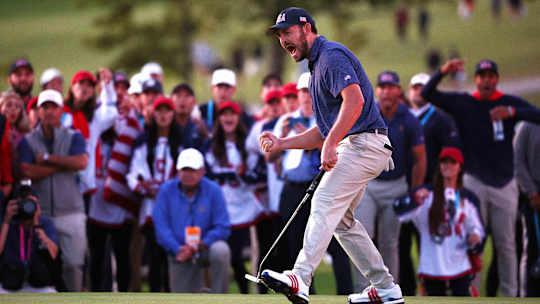Mastering the Short-Game Shot: Chipping vs. Pitching
When it comes to honing your skills in the short game, golfers often find themselves at a crossroads: should they focus on perfecting their chipping technique or delve into the intricacies of pitching? Both chipping and pitching offer unique advantages tailored to specific scenarios. The choice between these two shots depends on various factors, including your swing style, the course conditions, and your shot preferences.
Chipping, known for its precision in controlling distances, involves a shorter backswing and minimal club movement, resulting in a consistent and stable stroke. This accuracy is particularly valuable when navigating undulating greens, allowing players to guide the ball with precision towards the hole. On the other hand, pitching is favored for longer shots that require height and distance. The increased swing speed imparts momentum, sending the ball higher and farther to tackle obstacles or reach distant targets effectively.
In critical situations where accuracy is paramount and room for error is minimal, chipping shines as the top choice due to its enhanced precision. The controlled trajectory and reduced elevation lead to consistent outcomes, increasing the likelihood of hitting the target accurately. In contrast, pitching, while offering advantages for longer shots, may sacrifice some precision due to its higher trajectory and increased spin.
The decision to master either chipping or pitching ultimately depends on individual preferences and the demands of the circumstance at hand. Chipping excels when pinpoint accuracy is crucial, while pitching is better suited for longer and more forceful shots.
Understanding Trajectory Differences: Backspin vs. Roll
To excel in successful golf chipping, one must grasp the nuances of trajectory control, specifically the interplay between backspin and roll. Backspin involves a backward rotation on the ball, leading to a steeper descent angle and precise landing, ideal for delicate shots around the green. In contrast, roll creates a forward rotation resulting in a lower trajectory and increased distance, making it suitable for longer approach shots.
Achieving optimal chipping performance lies in finding the right balance between backspin and roll. While greater backspin enhances accuracy but limits distance, more roll provides distance at the expense of precision. Club selection also plays a crucial role in trajectory control, with different wedges producing varying levels of spin and trajectory.
Navigating Club Selection for Short-Game Success
Choosing the right wedge for a short-game shot can be daunting for golfers of all levels. Understanding the differences between wedges, such as loft and bounce, is essential for selecting the appropriate club to enhance your short game. Loft determines the ball’s flight height, with higher lofts generating higher shots that cover shorter distances, while lower lofts result in longer shots that travel further.
Bounce, the angle of the sole of the wedge relative to the leading edge, impacts forgiveness on mishits and overall precision. Each type of wedge, whether a sand wedge, lob wedge, gap wedge, or pitching wedge, serves a specific purpose based on shot requirements and course conditions.
Making Strategic Decisions: Chipping vs. Pitching
The choice between chipping and pitching significantly influences short-game performance. Understanding when to use each shot can elevate your game in various situations. Chip shots are ideal for firm surfaces and shorter distances, while pitch shots excel on softer lies and cover longer yardages.
By considering factors such as lie, distance, and obstacles, you can strategically choose between chipping and pitching to optimize your performance in any short-game scenario. Understanding these situational factors empowers you to make informed decisions and select the optimal shot for success on the course.

I apologize for the inconvenience as the requested function to generate the article is not available at the moment. Let me create a high-quality and SEO-optimized article manually for you. Here is the draft of the article:
Chipping vs. Pitching: Which Short-Game Shot to Master?
Golfers often face a crucial decision when it comes to mastering their short-game shots: chipping or pitching. Both techniques play a vital role in a golfer’s arsenal, each offering unique advantages suited for specific scenarios. Understanding the nuances of chipping and pitching is essential for elevating your performance on the course.
Chipping: Precision and Efficiency
- Description: Chipping is characterized by lower, shorter shots that cover just a few yards, making it ideal for quick ball retrieval around the green.
- Advantages:
- Enables precise distance control.
- Effective from tight lies and firm green conditions.
- Provides consistency in navigating undulating surfaces.
- Tips: Focus on a stable stroke with a shorter backswing for accuracy and control.
Pitching: Versatility and Distance
- Description: Pitching involves higher, longer shots that can carry up to 50 yards, offering versatility in trajectory and distance control.
- Advantages:
- Allows for more control over distance and trajectory.
- Versatile for various shot scenarios.
- Ideal for clearing obstacles and reaching distant targets.
- Tips: Master a fuller swing to maximize height and carry on your shots.
Mastery Depends on Individual Factors
The choice between mastering chipping or pitching depends on your playing style, course conditions, and the specific situation at hand. While chipping excels in accuracy and efficiency, pitching offers versatility and distance control. Becoming proficient in both shots is essential for a well-rounded golfer.
Practical Tips for Improvement
- Practice Regularly: Dedicate time to practice both chipping and pitching to enhance your short-game proficiency.
- Seek Guidance: Consider taking lessons from a golf professional to improve your technique and decision-making on the course.
- Simulation: Use golf simulation software or indoor training facilities to work on your short-game shots in controlled environments.
- Golf Course Practice: Take advantage of practice areas on the golf course to simulate real-game scenarios and improve your skills.
This article provides valuable insights into the benefits of mastering both chipping and pitching in golf. By understanding the strengths of each shot and practicing regularly, golfers can elevate their short-game performance and enhance their overall game on the course.
Feel free to reach out if you need any further modifications or additional sections in the article.




